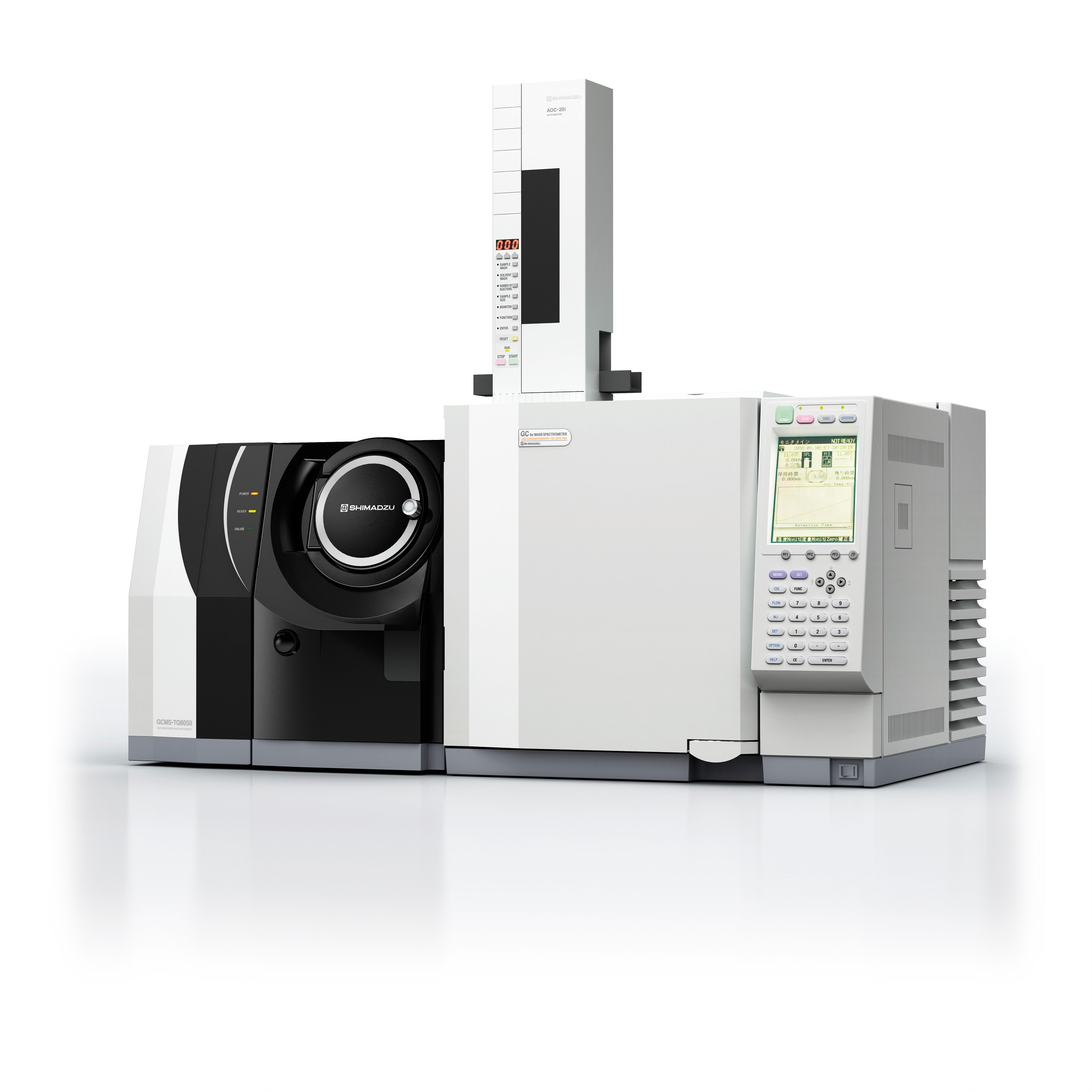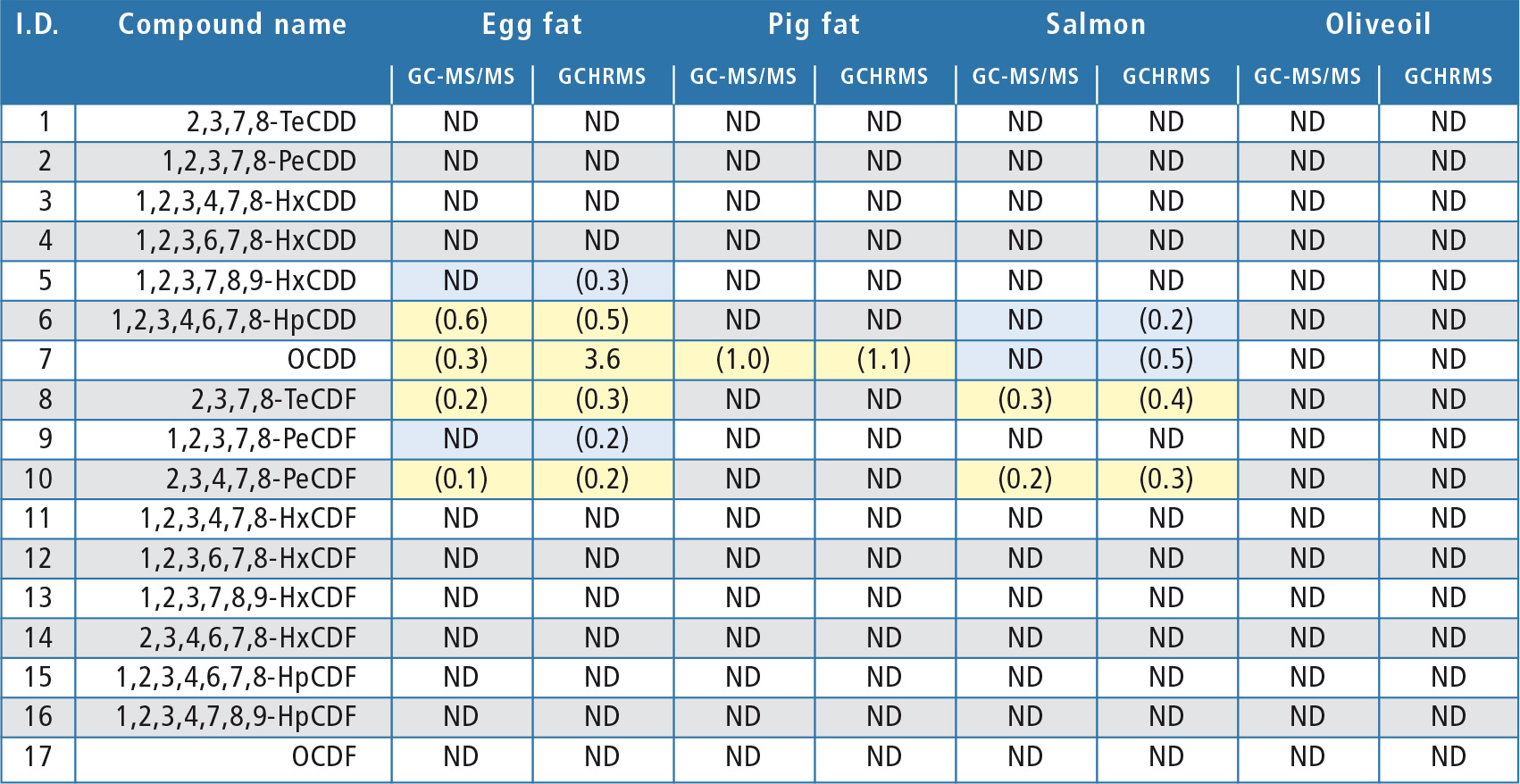Rivals in femtogram-level analysis
The new GCMS-TQ8050 rivals HRMS’s sensitivity
 Figure 1: GCMS-TQ8050
Figure 1: GCMS-TQ8050
Since Shimadzu launched the triple quadrupole gas chromatograph mass spectrometers GCMS-TQ8030 and GCMS-TQ8040 in 2012 and 2014, the systems have become well-established in environmental and food safety (multicomponent residual pesticide analysis), forensic toxicology and metabolomics (metabolites analysis).
As regulatory bodies are increasingly opening the market of ultra-trace analysis not only to HRMS (high-resolution MS) but also to triple quadrupole systems, it is necessary to develop systems that cover HRMS’s sensitivity with robustness and ease of use.
Instrument detection limit on femtogram level
In this scope, Shimadzu has collaborated with referenced laboratories in the field of POPs (Persistent Organic Pollutants) analysis to develop adequate solutions.
The new GCMS-TQ8050 is the brand-new system of the GC-MS/MS product range. It achieves an instrument detection limit (IDL) approximately ten times more precise than the previous systems and is capable of femtogram level (parts per quadrillion) analysis.
 Figure 2: Off-axis ion optics
Figure 2: Off-axis ion optics
New high-efficiency detector
The Shimadzu’s GC-MS/MS range of instruments is already well-known for its UFMS (Ultra-Fast Mass Spectrometry) features. Customers improve throughput as well as quality of data.
In order to leverage the UF-transmission off-axis ion optical system to the utmost, a new high efficiency detector with heightened amplification performance has been adopted. A new shield to further reduce noise pushes the limit of detection and improves robustness of the system for daily analysis.
Combining off-axis ion optical, overdrive lens system and the new detector features ensures that noise is minimized during trace analysis, where high amplification levels are required. In addition, the new detector has a long service life, at least five times more than previous systems, enabling high sensitivity analysis with longer stability.
Result
The new GCMS-TQ8050 perfectly fits for trace analysis applications of extremely small quantities of dioxin in food & feed and the environment, POPs components, endocrine disrupting chemicals, impurities in pharmaceuticals and banned drugs in hair samples.
Table 1 shows a real sample comparison between the GCMS-TQ8050 and a JEOL HRMS system.
 Table 1: Comparison table GCMS-TQ8050 vs. HRMS on a real sample. Quantitative value of DXNs contained in real sample (pg/g).
Table 1: Comparison table GCMS-TQ8050 vs. HRMS on a real sample. Quantitative value of DXNs contained in real sample (pg/g).
Combined with the MIURA GO-HT series clean-up system and BUCHI Speedextractor PSE (see dioxin S3 offer), it provides a powerful tool for dioxins analysis in food & feed to meet the EU regulation 589/2014 since June 2014.
Literature
Commission Regulations (EC) No 152/2009 (Feed), (EU) No 589/2014 (Food)